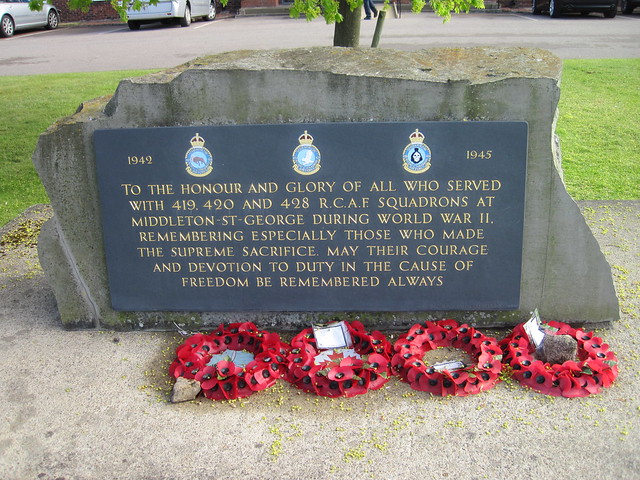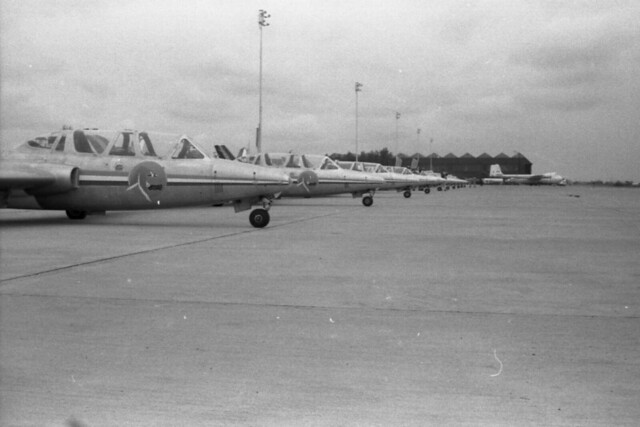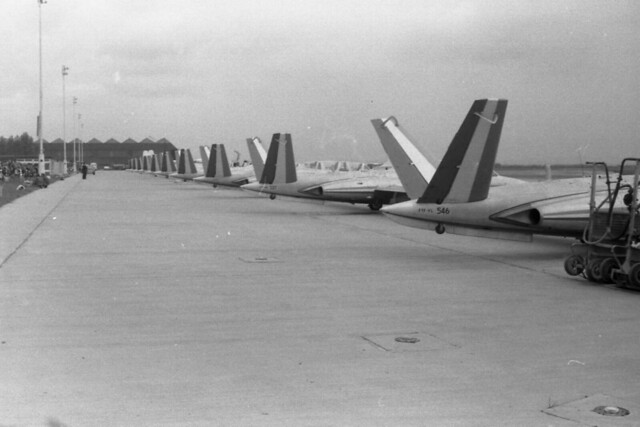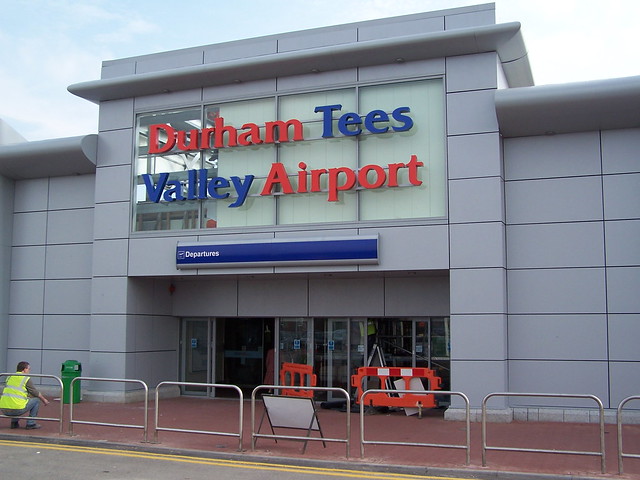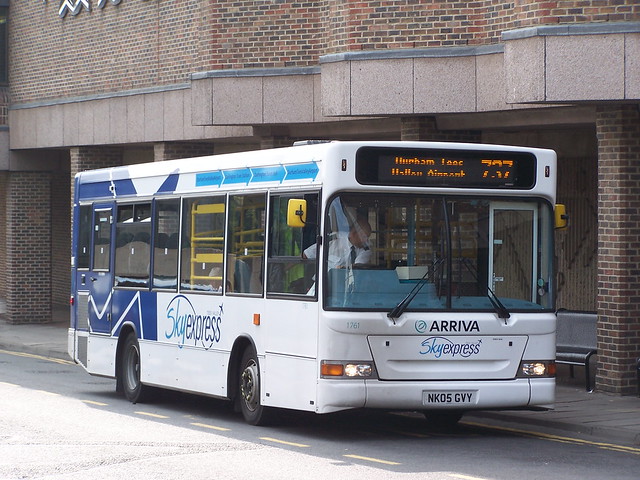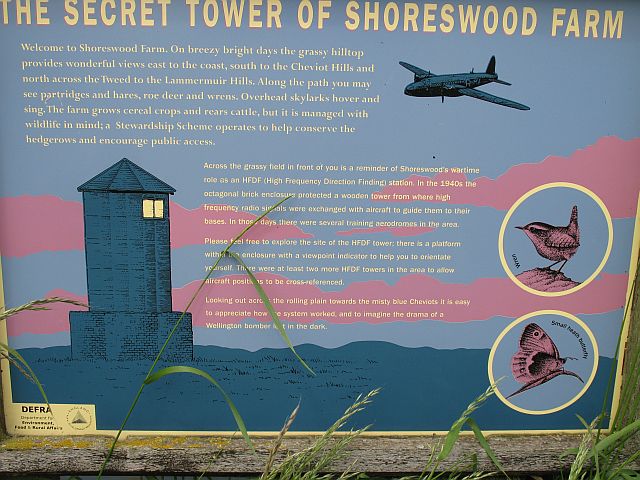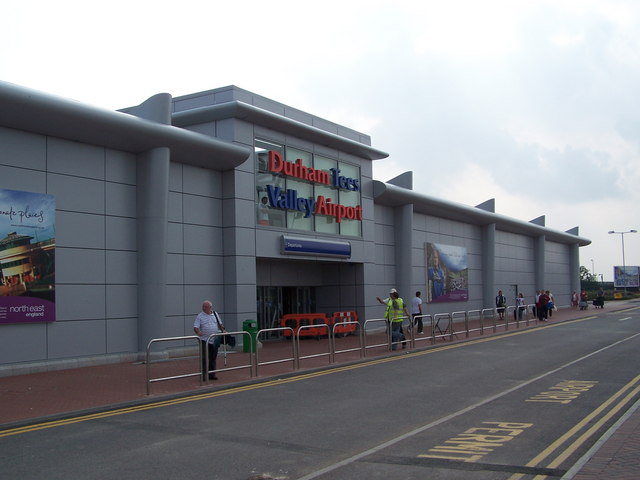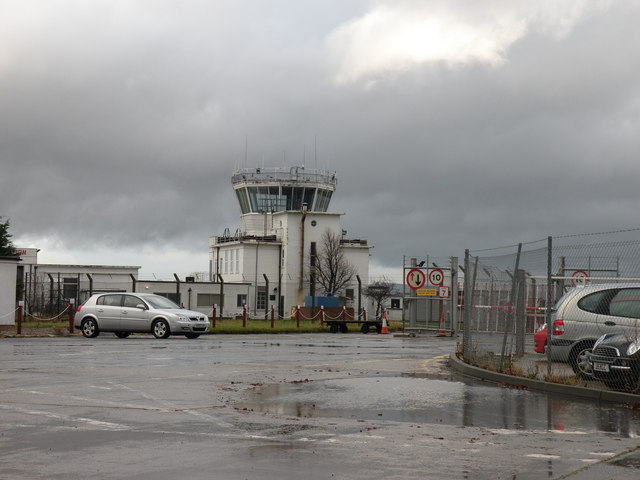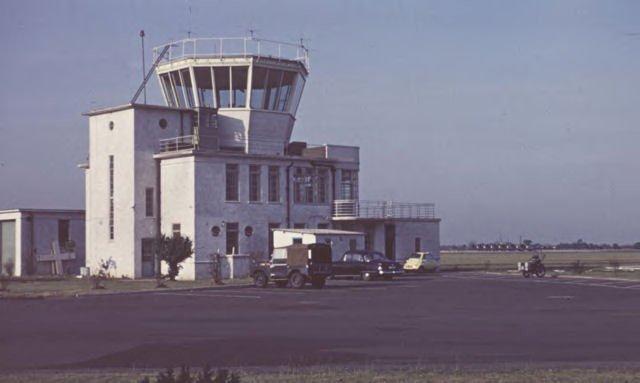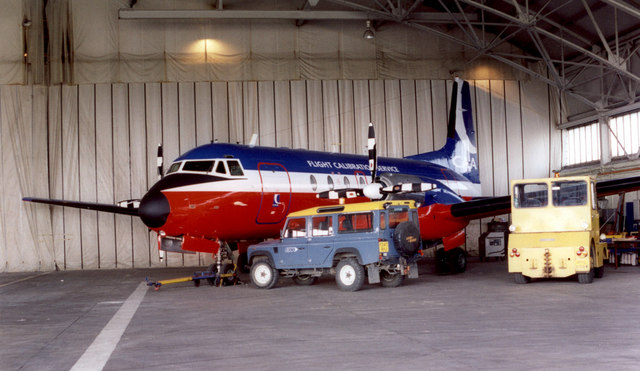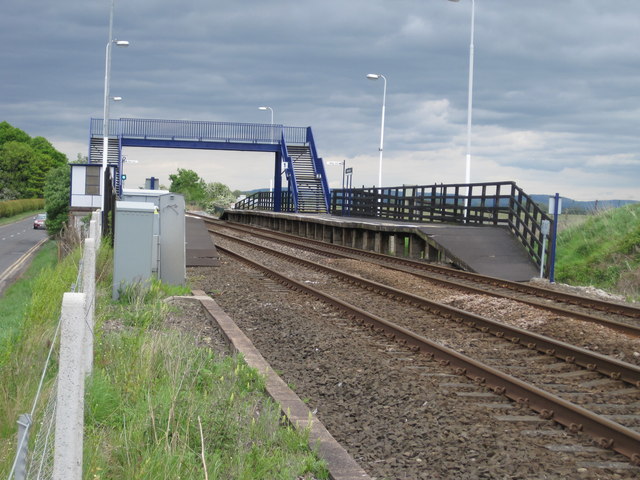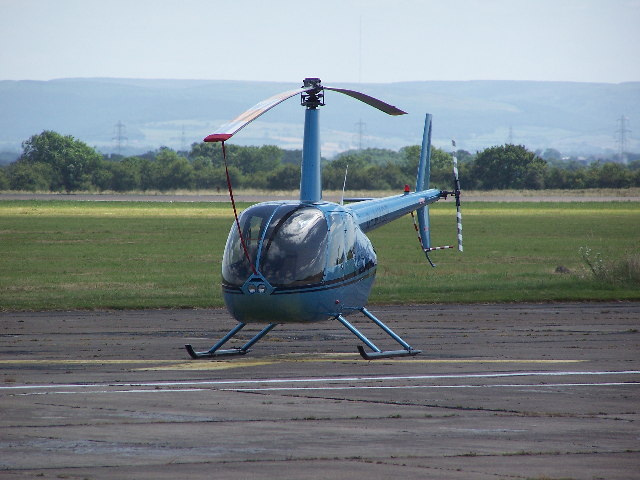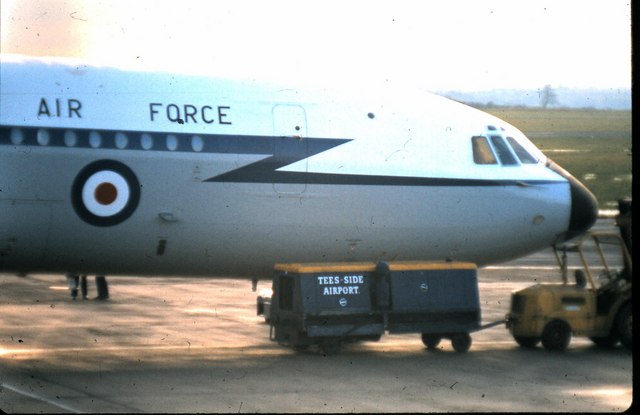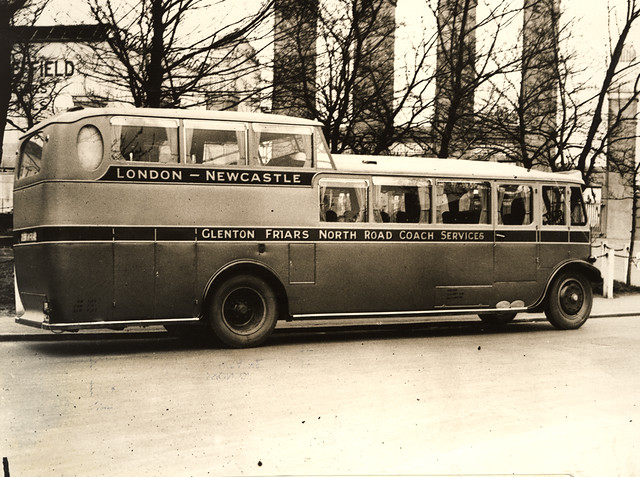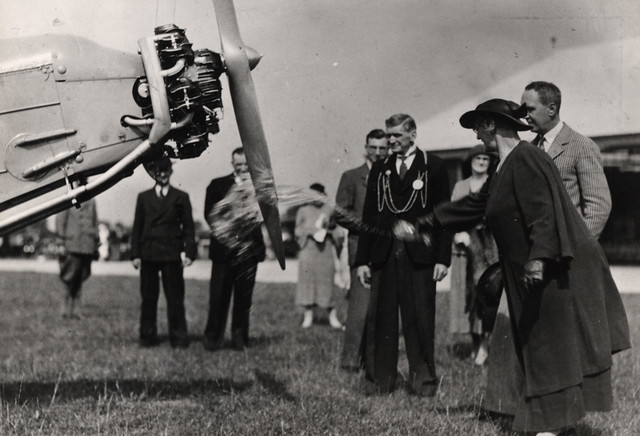Topics > Transport and Travel > Flying and Aviation > Durham Tees Valley Airport
Durham Tees Valley Airport
The airport is located close to the village of Middleton St George near Darlington. History: The airfield was originally built in 1941 during World War 2 and known as RAF Middleton St. George. The RAF station was closed in 1963 and purchased by the former Cleveland County Council, which developed it into a civil airport. The first flight from Teesside Airport (aka Middleton St George Aerodrome) took place in 1964, and in 2004 it was renamed Durham Tees Valley Airport as part of a redevelopment plan to expand the airport.
Durham Tees Valley Airport is an international airport located just east of Darlington in County Durham, north-east England, about 10 mi (16 km) south-west of Middlesbrough and 24 mi (39 km) south of Durham. The airport serves County Durham and North Yorkshire, and is situated close to the village of Middleton St George in County Durham.
Durham Tees Valley Airport is one of the United Kingdom's smaller airports, offering links to two domestic/European destinations. The airport has a CAA Public Use Aerodrome Licence (number P518) that allows flights for the public transport of passengers and for flying instruction. Originally an RAF Station, the airfield became Teesside International Airport in the 1960s and was renamed Durham Tees Valley Airport in 2004, though it is still commonly known by its previous name.
The majority shareholder in the airport is Peel Airports Ltd which owns 89%, while the remaining 11% is owned by a consortium of local authorities, consisting of Durham County Council and the borough councils of Darlington, Stockton-on-Tees, Middlesbrough, Hartlepool and Redcar and Cleveland.
History
RAF station
The airfield began its life in 1941 as Royal Air Force Station Middleton St. George or RAF Goosepool as known to the locals (though it has never officially held that name). It was home to many Canadian squadrons during WWII. Bombing missions from the station included those to Berlin, Hanover, Kassel, Mannheim and Munich. Post war it was home to the English Electric Lightning conversion unit and Javelin Squadrons. The RAF station was closed in 1963 and the airfield was put up for sale.
Teesside International
The former RAF Station and airfield was then developed into a civil airport. The first civilian flight from the airport took place in April 1964 with a Mercury Airlines service to Manchester. Princess Margaretha of Sweden opened the international passenger terminal in 1966.
After flights to Manchester the airport continued to develop a small yet strong network of both scheduled and inclusive tour charter routes. In November 1969 the first flight to London Heathrow was operated by British Midland—this route continued operating until 28 March 2009.
In 1974, the shares were divided between the newly formed Cleveland and Durham County Councils.
1990 saw the one millionth aircraft movement at the airport, in the form of a British Midland service to London Heathrow. In 1996 when Cleveland County Council was abolished, the airport ownership was divided amongst local Borough Councils. Working to a new Business Plan, passenger numbers grew steadily from 1993, up to the sale of the airport in 2002, based upon an expanding holiday charter business.
In 2002 the airport sought a strategic partner to assist with future development and Peel Airports Ltd was selected as the preferred company, taking a 75% stake in the airport with a commitment to invest £20m over the subsequent five years.
Durham Tees Valley Airport
On 21 September 2004 the airport was renamed Durham Tees Valley Airport as part of a major redevelopment plan. The name was changed in order to place the airport better geographically, as many of the airport's passengers, particularly those from outside the UK, were unfamiliar with the location of Teesside, whilst Durham is better known.
Shortly afterwards, a new access road, terminal front and terminal interior were completed, but the remainder of a planned £56 million expansion and development programme which would have enabled the airport to handle up to 3 million passengers annually never materialised due to falling passenger numbers after 2006. Other minor developments have seen new airfield lighting installed and during 2012, six-figure sums spent revamping the terminal building and renovating one of the World War II-era hangars.
As indicated above, passenger numbers peaked in 2006 when the airport was used by 917,963 passengers, but numbers declined to 161,092 in 2013, the lowest level seen at the airport since 1972.
In 2010, Vancouver Airport Services purchased a controlling 65% stake in Peel Airports Ltd and in December 2011, Peel Airports placed the airport up for sale.
In November 2010 the airport introduced a passenger levy of £6 to curb the airport's losses. Passengers must purchase a ticket from a machine before being allowed to proceed through security. Similar schemes are already in place at other small English airports including Blackpool, Newquay and Norwich. Passenger numbers during 2011 were 15% lower compared to 2010.
On 11 January 2011, Ryanair left the airport after ending service to Alicante Airport, the airline had previously served Dublin Airport, Girona Airport and Rome Ciampino Airport, they decided to leave the airport prior the introduction of the Passenger Facility Fee. On 14 December 2011, Peel Airports Ltd put their 75% stake in the airport up for sale.
On 10 February 2012, The Peel Group purchased their 75% share back under a new subsidiary, Peel Investments (DTVA) Ltd.
On 30 October 2013, the airport announced it would no longer focus on charter flights as part of cost-cutting plans that will see the airport diversify into a business airport. The airport stated it would instead focus on scheduled routes and non-passenger related aviation such as cargo/general aviation. The news is part of a Master Plan for the airport site, including residential and commercial development, released in November 2013 (see section below).
In November 2013, Peel Group released a master plan titled "Master Plan to 2020 and Beyond", covering the period up to 2050. This was followed up with a number of consultation events across the region with both the public and business community, the airport then took all feedback into consideration before releasing a final draft in April 2014.
Under the master plan, inclusive tour charter flights were axed, this is due to such flights being known to not make money for airports, with airports instead earning profit from duty free and car park charges etc., but in order to achieve this profit you need flights in large volume which DTVA has never had. The cornerstone of the master plan is a housing estate which will raise up to £30m to be reinvested back into the airport under a 'Section 106' agreement. This resulted in heavy opposition from the local public who fear the airport will eventually be closed to make way for further housing development, whilst supporters claim this is not the case, referencing most other airports which have more housing and often located closer to aprons and runways than what is being proposed at Durham Tees Valley. The houses received outline planning permission on 29 March 2017.
On 18 May 2017, Durham Tees Valley Airport announced significant investment to the airport's terminal facilities. Alongside extensive renovations in the departures area, improved retail services were introduced under the new 'Xpress' brand. The first phase of investment was completed in September 2017, with the second phase starting in Autumn 2017. The airport's Privilege Membership Club also faced improvements for passenger service upgrades.
Later in May 2017, Durham Tees Valley Airport also introduced a new ground handling service with Consort Aviation. Ground handling services are provided for general aviation and military aircraft.
On 7 August 2017, Loganair announced the introduction of two new services to Aberdeen and Norwich. The new service to Aberdeen introduces competition at the airport due to further investment on a route that is already served, including three flights on weekdays along with one flight on Sundays.
The new route to Norwich operated six times a week before being dropped in January 2018. The Aberdeen service is also being dropped from 16 March 2018.
Sycamore Aviation based at Hangar 1 is a company that specialises in aircraft salvage and recycling, also offering maintenance, repair and overhaul ("MRO"), and aircraft parking and storage. PTT Aviation is a flying school formed by the purchase of the flight training arm of Multiflight at Leeds/Bradford Airport followed by Durham Tees Flight Training and Northumbria Flying School in September 2016.
Passengers and movements
The airport saw strong growth from 1993 to 2006, when passenger numbers peaked at 917,963. Passenger numbers declined steeply in the subsequent four years due to the financial crisis of 2007–2010, and continued to fall albeit more slowly with a total of 140,902 passengers passing through the airport in 2015 (the lowest total since 1972). Cargo volumes have also slowly declined since 2000, to effectively zero tonnage. The airport is currently focussing on its "core" business flights which have shown slight increases in passenger numbers (% change from 2013 to 2014).
Ground transport
Bus
Arriva North East presently operates bus service No.12 that runs from Hurworth and Darlington to the airport several times per day. The extension of service 12 between Durham Tees Valley Airport and Teesside was withdrawn as a result of cancellation of Stockton Council financial support.
Car
The airport is situated off the A67 and is within easy reach of the A1(M), A19, A66 corridors, it is well signposted from all major routes (sometimes as Teesside Airport). A significant upgrade to complete a fast link direct to the airport from the A66 was completed in 2008.
Rail
The airport has its own railway station, which continues to use the name Teesside Airport. The station is located around 15 minutes walk from the terminal however, and is served by just two trains per week. It is not mentioned on the airport's website.. In December of 2017, train service was reduced to one train every Sunday.
Dinsdale railway station in the nearby village of Middleton St George is the closest station with regular passenger services.
A new station was planned to be built closer to the terminal (within 350m), as part of the Tees Valley Metro project.
However, the project has now been officially abandoned. The Peel Group made its call for infrastructure improvements days after a report showed Teesside Airport station served just 14 passengers in a whole year.
Taxi
Taxis are available directly outside the airport terminal.
Visit the page: Durham Tees Valley Airport for references and further details. You can contribute to this article on Wikipedia.
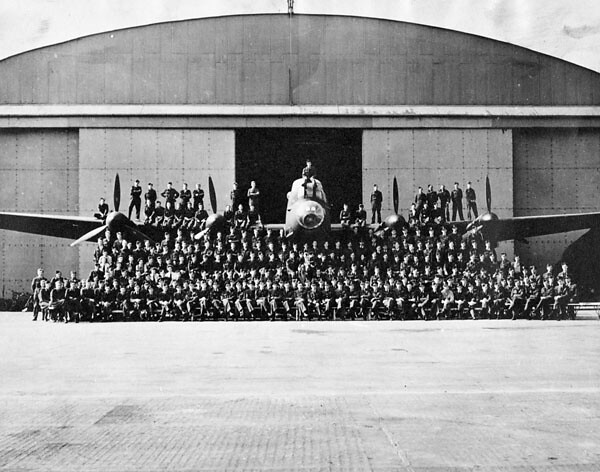
from Flickr (flickr)
Personnel of No. 419 (Moose) Squadron, RCAF, with an Avro Lancaster B.X aircraft, Middleton St. George, England, 1944 / Membres du 419e Escadron (Moose), ARC, posant devant et sur un Avro Lancaster B.X, Middleton St. George, Angleterre, 1944
Pinned by Simon Cotterill

from Flickr (flickr)
Aircrew and ground crew of No. 428 (Ghost) Squadron, RCAF, with an Avro Lancaster aircraft, England, August 18, 1944 / L’équipage et le personnel de piste du 428e Escadron (Ghost), ARC, devant un aéronef Avro Lancaster, Angleterre, 18 août 1944
Pinned by Simon Cotterill
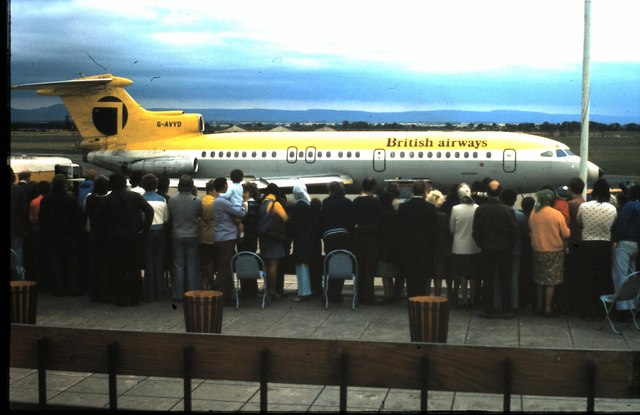
from Geograph (geograph)
Northeast Airlines Trident 1E at Teesside Airport (1974)
Pinned by Simon Cotterill
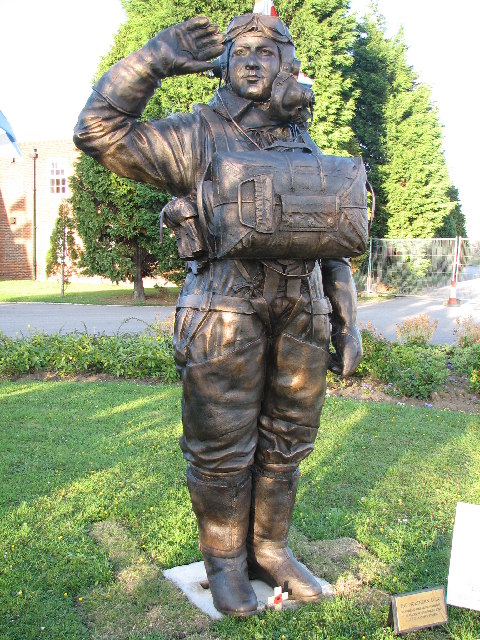
from Geograph (geograph)
The Statue to Pilot Officer Andrew Mynarski at Teesside Airport
Pinned by Simon Cotterill


from Flickr (flickr)
Personnel of No. 419 (Moose) Squadron, RCAF, with an Avro Lancaster B.X aircraft, Middleton St. George, England, 1944 / Membres du 419e Escadron (Moose), ARC, posant devant et sur un Avro Lancaster B.X, Middleton St. George, Angleterre, 1944
Pinned by Simon Cotterill

from Flickr (flickr)
Aircrew and ground crew of No. 428 (Ghost) Squadron, RCAF, with an Avro Lancaster aircraft, England, August 18, 1944 / L’équipage et le personnel de piste du 428e Escadron (Ghost), ARC, devant un aéronef Avro Lancaster, Angleterre, 18 août 1944
Pinned by Simon Cotterill

from Geograph (geograph)
Northeast Airlines Trident 1E at Teesside Airport (1974)
Pinned by Simon Cotterill

from Geograph (geograph)
The Statue to Pilot Officer Andrew Mynarski at Teesside Airport
Pinned by Simon Cotterill
